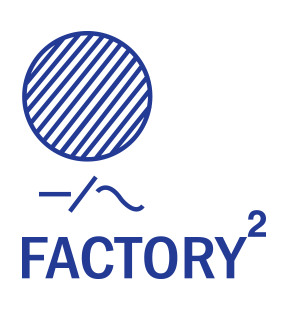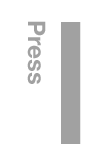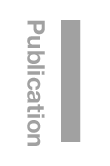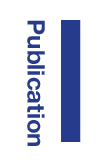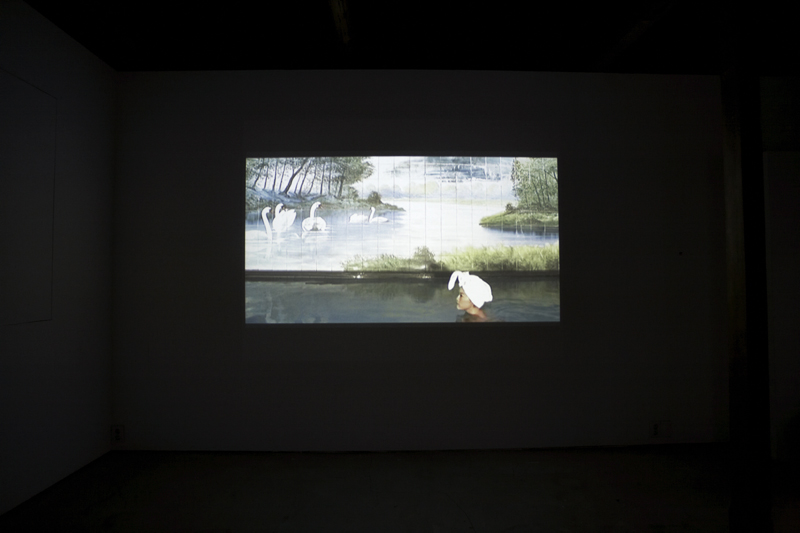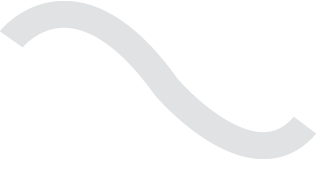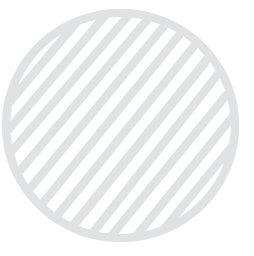| 지상의 모든 애인들이 한꺼번에 전화할 때 |
| 2007.10.27_11.18 |
지상의 모든 애인들이 한꺼번에 전화할 때
by Jaye Rhee
2007년 10월 27일(토)부터 11월 18일(일) 까지 갤러리 팩토리에서는 이재이의 개인전 <지상의 모든 애인들이 한꺼번에 전화할 때> 展이 열린다. 이번 개인전은 2004년 대안공간 루프에서 개인전을 가진 이후 3년만에 한국에서 열리는 개인전이다.
뉴욕에서 활동하고 있는 미술가 이재이의 작품은 비디오, 퍼포먼스, 설치, 사진 사이의 어딘가에 위치한다. 2001년 <예술가의 책> 이라는 작품으로 조형적이고 개념에 기초한 작업을 보여준 것을 시작으로 가장 최근에는 평면 스크린 모니터나 대형화면에 프로젝터로 보여지는 비디오 작품들을 주로 선보이고 있다.
작업 초기에서부터 레디메이드의 개념을 놓치지 않아온 이재이는 본 전시에서 보여질 최근의 비디오 작품들 중 목욕탕 시리즈의 일부이기도 한 <백조>(Swan,2006)와 <북극곰>(Polar Bear,2006) 을 미리 디자인된 세트와 함께 목욕탕을 배경으로 촬영하였다. 이는 목욕탕이라는 레디메이드 배경을 사용함으로 공적인 공간과 사적인 공간에 대한 문제제기와 함께 목욕탕의 실내장식의 사회적 미학에 대한 방향을 제시하고자 함이다.
멀티채널 비디오, 뉴 미디어, 사진으로 작업하는 이재이가 국제현대미술계에서 자신의 중요성을 확립해가는 과정을 지켜볼 수 있는 전시가 될 것이다.
이재이: 움직이는 미술
글_라울 자무디오
뉴욕에서 활동하고 있는 미술가 이재이의 작품은 비디오, 퍼포먼스, 설치, 사진 사이의 어딘가에 위치한다. 가장 최근의 프로젝트는 평면 스크린 모니터나 대형화면에 프로젝터로 보여지는 비디오작품들이다. 어떤 식으로 전시하건 간에, 이재이의 비디오 작업은 주어진 공간의 건축학을 (architectonics)을 단호하면서도 우아하게 이용하고 있다. 이렇게 말한다면 이들 작품들을 설치와 비디오의 교차점에 있는 것으로 분류는 해주겠지만, 비디오 아트라는 독립적인 장르에 그녀의 작품을 위치시킬 수 있는 퍼포먼스적 차원이 있는 것도 사실이다. 여기서 나는 작가들이 비디오나 필름에 다양한 문맥으로 퍼포먼스를 사용하는 특정한 관행을 말하는 것인데, 예를 들자면 김수자, 매튜 바니, 폴 메카트니와 같은 이들이 여기에 해당된다. 이런 작가들과 마찬가지로, 이재이의 최근의 비디오 작품들?<음표>( Notes, 2007), <백조>(Swan,2006), <북극곰>(Polar Bear, 2006) 중에서 뒤의 두 작품은 목욕탕 시리즈의 일부이기도 하다?에서 작가가 다양한 활동에 관여하고 있는 것을 볼 수 있다. 하지만 퍼포먼스와 비디오로 수렴되는 그녀의 작업방식 이전에는 우선 조형적이고 개념에 기초하며 이후에 나올 미술을 위한 조건을 설정하는데 있어 결정적인 작품이 먼저 나왔다.
예를 들어 <예술가의 책>(Artist Book 2001-02)이라는 제목의 초기 작품은 비디오 작업을 지향하는 그녀의 발전과정을 보여주는 전조이며 재료의 개념적인 사용을 보여주는 증거가 된다. 작품은 식료품점에서 볼 수 있는 그런 종류의 각설탕을 담는 모조 상자로 이루어져 있다. 상자에 원래의 라벨을 붙이는 대신에 이재이는 작품의 이름을 붙였다. 상자에는 책 모양의 물체가 담겨있는데, 이 안에는 상자 속에 든 각설탕으로 만들어진 단어의 칼라사진이 가득 들어있다. 언어와 조형적 물체 사이의 관계를 추구하는 또 다른 작품으로는 병 걸이로 구성한 무제의 작품이 있는데, 이재이는 천천히, 그렇지만 질서정연하게 병들이 마르도록 위에다 병을 쌓아 올린다. 확실하게 뒤샹의 유명한 <병 걸이>(Bottle Rack, 1914)를 자신의 작품 속에 인용하고 있기는 하지만, 작품을 원래의 문맥으로 되돌려놓음으로써 레디메이드의 제스처를 뒤집어버린다. 순수하게 미학적인 관점에서 볼 때, 그녀의 재구성은 일종의 과거와의 대화를 만들어냈을 뿐 아니라, 정치적인 읽기는 아니라 하더라도 완전히 다른 젠더화된 읽기를 과거에 불어넣은 것처럼 보인다. 셰리 레빈이 뒤샹의 <샘>(Fountain)을 재작업했던 것과 같은 맥락에서, 하지만 좀 더 비판적인 구성으로 작업한 것으로 이재이의 개입을 생각해보면 된다. 그녀의 병 걸이 작업은 병들로 인해서 걸이대의 줄기부분이 가려지는 데서 약간은 힘을 실어주는 숨은 의미를 갖고 있기 때문이다. 더 최근에 그녀는 미리 디자인된 세트를 목욕탕을 배경으로 촬영된 그녀의 비디오 시리즈를 위한 레디메이드 배경으로 사용해오고 있다. 현재 진행되고 있는 이 작업은 그녀를 세상으로 데려다 주었으며 공적인 공간과 사적인 공간의 문제와 함께 목욕탕의 실내장식의 사회적 미학을 지향하고 있다.
예를 들어, <백조>(Swan, 2006)라는 비디오에서 이재이는 목욕탕의 욕탕에서 한가롭게 목욕을 하는 자신을 담았다. 탕의 벽에는 조금은 아무렇게나 그려진 백조들이 있다. 일종의 배경막으로 백조가 있는 목욕탕을 카메라가 훑고 지나갈 때, 이재이가 벽에 그려진 새를 연상시키는 머리장식을 쓴 채로 탕에서 잘 드러나지 않는 물에 뜨는 기구 위에 있는 것처럼 보인다. 수중발레와 바디 아트의 요소를 갖고 있는 이재이의 비디오는 역설적인 분위기를 자아낸다. 한 편으로는 이재이가 가장한 동물형상과 작가의 모방으로 만들어진 백조의 인간형상 사이의 이런 부름과 대답에는 시적으로 동요되게 하는 무언가가 있다. 반면에 물결처럼 느껴지는 물의 시간적인 흐름과 작가의 미세한 흔들림에는 마음을 진정시키는 시각적으로 간결한 명상적인 리듬이 있다. <음표> (Notes, 2007)라는 제목의 최근의 비디오를 이끌어가고 있는 것도 또한 운율과 점강에 대한 이런 표면적인 감각이다.
<음표>는 멀티채널 비디오로 퍼포먼스, 오디오 작업, 영상을 포함하는 많은 예술의 분야를 한데 엮었다. 하지만 회화와 조각을 위시한 다른 형식의 영역으로의 전환이 희미하게 보인다. 앞서 말한 장르들이 이 야심작의 요점이다. 관객의 눈 앞에 펼쳐지는 것은 평면스크린 모니터에서 나오는 수많은 비디오인데, 검은 색 옷을 입은 사람들이 백색의 무정형인 공간에 다섯 개의 검은 수평선을 배경으로 나온다.
이 퍼포먼스 지향적인 작품에서 배우들은 일종의 움직이는 음악적 부호를 흉내 내는데, 다시 말하자면 이들은 악보를 구성하는 음표를 대신하는 것이다. 이들의 움직임을 통해서 실시간으로 옮겨지면서 또한 들리게 되는 일종의 음악적인 “작곡”을 행하는 것이다. 이 행위는 흰색의 바탕과 긴장관계에 있는 검은 선들로 만들어지는 비디오의 대조적인 배경 속에서 고조된다. 즉, 이런 미니멀한 무대배경은 “낱장”의 악보로서 기능하고, 만들어진 소리는 표면적으로는 그 악보를 가로질러 움직이면서 비디오에서 음악을 활성화시키는 음표로 배치된 행위자들에 의해 시작된다. 하지만 흥미로운 것은 관객의 시야를 가로질러 움직이는 신체를 돋보이게 하면서도 상쇄하는 사운드트랙이다. 커졌다가 작아졌다 하면서 울려 퍼지는 무조의 취주와 하모니를 이루는 악절 사이에서 동요하면서, 작품의 오디오는 행위자들과 기괴한 상호작용을 한다. 어떤 때는 신체와 소리 사이에 동시적인 관계가 있다. 인물들이 걷고, 발을 끌면서 움직이고, 활보할 때, 음악은 리드미컬하게 강약을 바꾸면서 인물들이 취하는 동작과 평행하는 듯이 보인다.
프레임으로 나누어진 평면 스크린과 스크린이 장착된 지지벽의 수평적, 연속적인 구성으로 인해 <음표>는 회화의 영역까지도 들여다보는 조각의 영역을 갖게 된다. 인물들이 스크린의 한 쪽에서 다른 쪽으로 지나갈 때, 각각의 모니터에 이들이 담겨지지만, 이들의 반복적인 움직임은 가슴을 두근거리게 하는 요술 주마등을 바로 떠올리게 하는 계속성의 환상을 낳게 된다. 예를 들자면, 에드위어드 머이브릿지와 가상공간의 접점을 생각해보면 될 것이다. 혹은 이런 다양한 형상의 미장센이 일종의 디지털 주마등(매직 랜턴)이나 새로운 미디어 만화경(활동요지경)과 같다고 하면 될까? 이재이가 아주 효과적으로 활용하고 있는 수사의 하나는 단일한 작품을 구성하는 여러 대의 비디오 간의 불일치이다. 이제까지는 작품은 하나 이상의 설치 형식을 취했었기 때문이다.
초기의 버전에서는 평면 스크린은 연속적으로 배치되고 비디오는 더 전통적인 방식으로 보여진다. 가장 최근의 설치에서 이재이는 평면 스크린을 두 열로 배치했는데, 한 열이 다른 열 위에 있어서 비디오가 마치 반영처럼 서로에 의거해 움직이는 듯이 보이게 되었다. 두 가지 다른 배치 방식은 흥미롭게도 다른 예술적인 결과를 갖는다. 수평적인 설치는 왼쪽에서 오른쪽으로 마치 텍스트처럼 혹은 낱장의 악보를 읽는 방식으로 읽혀질 수 있다. 이재이는 이런 초기의 구현의 목적론적 본질을 손상시키기 위해 이번에는 형상들이 개별 모니터 내에서 다른 방향으로 움직이게 한다. 즉 “음표”를 정면으로 또 측면으로 배치시킴과 동시에 왼쪽에서 오른쪽으로, 오른쪽에서 왼쪽으로, 움직이게 하는 것이다. 때때로 작가는 또한 그녀의 “낱장 악보”에 변화된 숫자의 “음표”를 배치한다. 음악이 조화로운 음의 결합이나 화음, 심지어는 아르페지오ㅡ쪼개진 화음이 연속해서 연주되는ㅡ를 연주하는 것처럼 보일 때, 인물들은 작곡된 음악의 원인인 것처럼 보인다. 하지만 <음표>이ㅡ더 최근의 버전에서는 두 열의 모니터에 의해 나오는 거울의 효과에서 생겨난 자리바꾸기에 의한 완전히 새로운 효과의 조합이 있는 것으로 보여진다. <음표>의 위쪽 시퀀스는 오른쪽 위로 방향이 바뀐 행위자들로 이루어진 반면에, 비디오의 아래쪽 시퀀스는 행위자들이 거꾸로 보여진다. 이는 많은 개념적, 서사적 가능성을 설정해준다.
그 가능성들 중의 하나는 오른쪽 위로 향해있는 행위자들이 악보의 최고음역이나 더 높은 음역을 의미하는 반면, 뒤집혀져 보이는 행위자들은 베이스, 혹은 낮은 음역을 나타낸다는 것이다. 그렇지만, “악보”의 어느 쪽 세트에서든지 이재이의 멀티채널 작품은 퍼포먼스, 혹은 시간 속의 움직임의 시학을 강조한다. 때로는 행위자들의 박자와 조화가 되거나 어긋난다고 느껴지더라도, 템포는 <음표>와 밀접한 관련이 있다. 오디오와 비디오적 구성요소들 간의 부름과 대답은 다형적이다. 말장난이기는 하지만, <음표>에서의 인체는 소리가 그것의, 즉 움직임의 연장이 되거나, 그 반대가 되는 곳까지 살이 붙여져서 충실해진다. 행위자들과 스크린 안에서 악보로서 그들이 움직이는 영역 간의 관계는 명백하지만, 소리를 그대로 글자로 옮겨 적는 것처럼 신체의 움직임을 읽는 것을 거부하는 이들의 자동적이고 시적인 리듬에 의해 동시에 방해를 받게 된다.
이재이가 <음표>에서 인용하는 형식들은 아주 광범위하다. 머스 커닝햄과 트리샤 브라운 같은 전위무용가들의 요소를 찾아 볼 수도 있다. 브루스 나우만의 초기의 실험적 작품 같은 움직임을 지향하는 비디오작품의 요소도 있다. 허나 신체의 움직임에 관한 <음표>의 아름다움은 이재이가 마치 감독이 영화 촬영세트에서 배우들을 감독하듯이 안무를 하는 독특하고도 혁신적인 방식에 있다. 그러나 퍼포먼스 미학을 조각으로 확장시키는, 그녀가 창조하는 형식적인 역동성도 또한 존재한다. <음표>는 소리의 움직임과 이들의 예술적인 전체로서의 수렴에 관한 작품만은 아니다. 왜냐하면 이재이가 움직임의 부재와 함께 침묵의 중요성도 탐구하는 독특한 능력을 갖고 있기 때문이다. <음표>가 움직임을 담고 있고, 형식적으로, 그리고 개념적으로 움직임이 절대적으로 필요한 만큼, 정지는 존재론적으로 꼭 필요하다. 비디오의 음악과 소리 사이에 침묵의 순간에 대해서도 같은 말을 할 수 있을 것이다. 침묵은 금이라는 격언은 포지티브 마크가 만들어지는 네거티브의 배경이 회화에 중요한 것과 마찬가지로 음악에 필수적이다. 조각을 둘러싸고 있는 빈 공간이 조각의 그 지각의 구체화와 인식에 필요한 것과 마찬가지이다.
역설적으로 무용, 음악, 비디오, 설치와 회화, 조각의 영역을 망라하는 <음표>에서 볼 수 있는 여러 분야의 배치는 결코 과한 것으로 느껴지지 않고, 세밀함과 침착함으로 개념화되고 질서정연하게 실행된다. <음표>는 신선하고 날카로우며 꼼꼼한 작품인 동시에 자연스럽고 활기차게 느껴진다. 그리고 본질적으로 이재이의 예술적 재능을 증거해준다. 이제 멀티채널 비디오, 뉴 미디어, 사진으로 작업하는 한 예술가가 국제현대미술계에서 자신의 중요성을 확립하기 시작하고 있다.
라울 자무디오
2007년 10월, 뉴욕에서
라울 자무디오는 뉴욕에서 활동하는 독립 큐레이터, 미술비평가이다. 뉴욕의 화이트박스의 전시디렉터, 아티스트 네트워크의 무임소 큐레이터를 역임했다. 미국, 유럽, 멕시코, 중국에서 48회의 전시에서 큐레이터를 맡았다. 갤러리, 미술관, 아트페어, 공공장소에서 전시를 기획하는 일 외에 그는 2005년 베니스 비엔날레에서 오피셜 프로젝트를 공동 큐레이트했고, 2006년 리버풀 비엔날레 인디펜던트의 큐레이터였다. 또한 2004년과 2007년 쿠엔카 비엔날레에 심사위원으로 초청되었다. 그는 2008년 미디어시티서울 뉴미디어 비엔날레를 박일호씨의 감독 아래 3명의 큐레이터들과 공동 기획할 예정이다. 미술비평가로서 그는 단행본, 미술관과 갤러리의 전시 카탈로그에 현대미술에 관한 150편 이상의 글을 썼다. 현재 <아트 넥서스>의 통신편집자, <플래시 아트>의 통신원으로 있다. 그의 글은 <PART>, <Zingmagazine>, <TRANS>, <Estilo>, <Journal of the West>, <Tema Celeste>, <Art.Culture Seoul>, <Art Notes>, <Bridge>, <Framework: the Finnish Art Review>, <the L.A. Times> 등에서 볼 수 있다.
Jaye Rhee: Art in Motion
The work of New York-based artist Jaye Rhee resides somewhere between video, performance, installation, and photography. Her most recent projects include videos exhibited either on flat screen monitors or projected in large format. In either mode of display, Rhee’s video work emphatically yet elegantly engages the architectonics of a given space. While this would certainly categorize these artistic endeavors as being at the intersection of installation and video, there is also a performative dimension to them that situates them within a distinct genre of video art. And here I am referring to a specific practice where artists use performance in their video or films in a myriad of contexts; some of these include Sooja Kim, Matthew Barney, and Paul McCartney, to name just a few. Like the aforementioned artists, Jaye Rhee’s recent video pieces including Notes (2007), Swan (2006) and Polar Bear (2006), which the latter two are part of her Bathhouse series, are works in which the artist is seen engaged in a variety of activities. Her modus operandi that converge performance and video was, however, first preceded by work that was sculptural and conceptually-based and pivotal in setting the terms for the art that was yet to come.
An early piece titled Artist Book (2001-02), for instance, is a precursor to her process oriented video works and a telltale sign of Rhee’s conceptual use of materials. It consists of simulated boxes for sugar cubes, such as the kind one finds at any grocery store. Rather than have the original label on the box, Rhee has replaced it with the title of her work. The box is repository for an object in book form replete with color photographs of words made out of sugar cubes found in the box. Another work that also teases out the relationship between language and the sculptural object is an untitled piece consisting of a bottle rack on which Rhee slowly, yet methodically places bottles on them to be dried. While Rhee adamantly cites Duchamp’s famous Bottle Rack (1914) in her work, she inverts the readymade gesture by reinserting the work back into its initial context. And from a purely aesthetic perspective, it seems that her reconfiguration has not only created a kind of dialogue with the past, but has infused it with a wholly different gendered, if not political reading. Think of Rhee’s intervention along the same lines as Sherry Levine’s reworking of Duchamp’s Fountain, but with a more critical framing. For Rhee’s bottle rack has a slightly empowering subtext in the eclipsing of the bottle rack’s stems by the bottles. More recently, Rhee has been using the pre-designed set as a kind of readymade locale, if you will, for her series of videos based shot on location in bathhouses. This on-going project has taken her around the world and is oriented around questions of public and private space, as well as the social aesthetics of bathhouse decor.
In the video Swan (2006), for example, Rhee has taped herself taking a leisurely bath in the bathhouse’s pool. On the wall of the pool area are a series of swans painted in a somewhat offhanded style. As the camera pans across the bathhouse that includes the swans as simulated backdrop, Rhee appears on an indistinct floating device in the pool while wearing a headpiece reminiscent of the avian on the wall. Part synchronized swimming, water ballet and body art, Jay Rhee’s video emits a paradoxical air. On the one hand there is something poetically unsettling about this call and response between Rhee’s feigned zoomorphism and the anthropomorphism of the swan teased out by the artist’s mimicry. On the other hand, the artist’s subtle waddling and the temporal flow in water that feel like ripples, have a soothing meditative rhythm that is visually laconic. It is this ostensible sense of cadence and crescendo that also drives her recent video titled Notes (2007)
Notes is a multi-channel video that weaves together a plethora of artistic disciplines including performance art, audio-work, and the moving image; yet there is also a faint veering into other formal registers including painting and sculpture. The former genres are the crux of this ambitious work: what unfolds before the viewer’s eyes are numerous videos played on flat-screen monitors on which are displayed individuals dressed in black and set against a backdrop of five dark horizontal lines in a white, spatially amorphous environment.
The actors in this performance-oriented piece feign a kind of animated musical notation, that is, they are human surrogates for notes that constitute a score; and through their movement, enact some sort of musical “composition” that is both translated into real time as well as heard. This activity is heightened within the video’s contrasted setting produced by the black lines in tension with the white background; in other words, this minimalist stage-set serves as “sheet” music and the audio created is ostensibly triggered by the performers deployed as notes that move across it and seem to activate the music in the video. Interestingly, however, is the soundtrack that compliments yet offsets the bodies moving across the viewer’s field of vision; vacillating between sonorous, atonal flourishes that crescendo and decrescendo as well as more harmonious passages, the work’s audio has an uncanny interplay with the performers. Sometimes there a synchronous relationship between body and sound: as figures step, shuffle, and prance, the music seemingly parallels the action undertaken both rhythmically and in syncopation. Other times the music harmonically meanders as if there is only happenstance that links audio with the visual. Further complicating Notes’ aesthetic and conceptual strategies are the multiple screens on which it is played.
The horizontal, sequential configuration of flat-screens that are divided by their frames and the support wall on which they are mounted, give ¬Notes a sculptural presence that veers into the painterly as well. As the figures pan from one side of the screen to the other, they are contained within the individual monitors yet the repetitive movements create the illusion of continuity that offhandedly evoke a palpitating phantasmagoria. Think, for instance, of a cross between Eadweard Muybridge and virtual space; or, could these polymorphous mise-en-scenes be the equivalency of some sort of digital, magic lantern; or maybe a new media zoetrope? Another trope that Rhee works with great effect is the disparity between the various videos that constitute her singular work. For the work, so far, has taken more than one form of installation.
In an early version the flat screens are exhibited in sequence and the video is displayed in a more conventional manner. In the most recent installation, Rhee has installed flat screens in two rows, one row above the other where the videos seem to play of each other as if they were reflections. Both modes of display have, interestingly enough, different artistic results. The horizontal installation can almost be read like a text from left to right, or in the manner that one may read sheet music. What Rhee does to undermine the teleological nature of this earlier incarnation is to have the figures move in different directions within the individual monitors: from left to right, right to left, as well as posing as “notes” both frontally and in profile. Occasionally, the artist also populates her “sheet music” with a varied number of “notes.” When the music seems to play harmonic clusters, chords or even arpeggios, which are broken chords played in sequence, the figures seem to be the cause of the composed sound. With the most recent version of Notes there seems to be, however, a whole new set of effects created that by way of displacement created from the mirrored effect caused by the two rows of monitors. The top sequence of Notes consists of performers moving right side up, while the bottom series of videos they are upside down. This sets up a plethora of conceptual and narrative possibilities.
One of them being is that whereas the performers that are right side up could allude to the treble or upper register of a musical score, those inverted could be the bass or lower register. But even within either set of “scores” Rhee’s multi-channel piece emphasizes the poetics of performance or of movement in time. Tempo is germane to Notes, albeit that it often feels to be both in concert and against the meter of the performers. The call and response between audio and visual components are polymorphous; the body in Notes is, if you will excuse the pun, fleshed out to where sound becomes an extension of it, of movement, and vice versa. For though the relationship between performers and the area they move within the screen as sheet music is overt, it is concomitantly obviated by their autonomous, poetic rhythms that resist reading body movement as strictly about the transliteration of sound.
The formal citations of Rhee’s Notes run far and wide. One can see elements of the avant-garde dancers Merce Cunningham as well as Trisha Brown. There also elements of video work oriented around movement such as the early, experimental pieces by Bruce Nauman. The beauty of Notes regarding bodily movement, however, resides in the unique and innovative way that Rhee choreographs as a director would guide actors on a film-set; but there is also a formal dynamic that she creates that extends the performance aesthetic into sculpture. Notes is not only about sound and movement and their convergence into an artistic whole, for Rhee also has a unique ability to exploit the absence of mobility as well as the importance of silence. As much as Notes contains movement and is formally and conceptually integral to it, stillness is just as ontologically imperative. The same thing could be said of the video’s audio and the breaks of silence in between sound. The adage that silence is golden is intrinsic to music in the same way that the negative background on which a positive mark is made is crucial to painting; or the empty space surrounding sculpture is necessary for its perceptual concretization and cognition.
Paradoxically, the array of disciplines in Notes that run the gamut of dance, music, video, installation as well as painting and sculpture never feels excessive, but is conceptualized and formally executed with finesse and aplomb. Notes is a crisp, sharp, and precise work, while at the same time it feels spontaneous and energetic. And, in essence, is testament to Jaye Rhee’s artistry; an artist whose work in multi-channel video, new media, and photography, is beginning to establish her importance in the field of international contemporary art.
Raul Zamudio
New York, October, 2007
Raul Zamudio is a New York-based independent curator and art critic. He was Director of Exhibitions at White Box NY, NY and was Curator-at-Large at the Artist Network NY, NY. He has curated 48 exhibitions in the U.S., Europe, Mexico, and China; and apart from curating exhibitions in galleries, museums, art fairs, and public spaces, he was co-curator of an official project at the 2005 Venice Biennial, curator at the 2006 Liverpool Biennial Independents, and was also invited to juror the 2004 and 2007 Cuenca Biennials. He will also co-curate the 2008 Media_City Seoul New Media Biennial with 3 other curators under the directoriship of Ilho Park. As an art critic, he has published over 150 articles on contemporary art in books, museum and gallery exhibition catalogs, and is corresponding editor for Art Nexus and correspondent for Flash Art. Other texts appear in PART, Zingmagazine, TRANS, Estilo, Journal of the West, Tema Celeste, Art/Culture Seoul, Art Notes, Bridge, Framework: the Finnish Art Review, and the L.A. Times.
이재이
Jaye Rhee
Education
2001-2003 MFA, School of The Art Institute of Chicago
1997-2001 BFA, School of The Art Institute of Chicago
Solo Exhibitions
2004 Video Landscape:Real Fake, Chicago Cultural Center, Chicago
Transcape, Gallery Loop, Seoul, Korea
Selected Exhibitions & Performances
2006 Ssamzle Video Show, Ssamzle Theater, Seoul, Korea
2006 Asian Contemporary Art Week, NY
2006 Open Studio, Ssamzie Art Space, Seoul Korea
2006 Moving Time/Nam June Paik + 30 int'l Video Artists, Gallery Korea
2005 Pool Video Fair, Pool Art, Miami
2005 From the Artist's Studio:Wish You Were here, The Living Room, Miami
2005 White, Nova Gallery, Chicago
2005 AIM 25, Bronx Museum, NY
2005 Everybody Paints, Molar Productions, Chicago
2005 Counterpoise, Whitebox Gallery, NYC
2005 Greatest Hits, Soap Factory, MN
2005 Blue, Gana Art Center, Seoul, Korea
2005 Portraits and Landscapes Video Salon, Alternator Gallery, BC, Canada
2004 Butternut Ink, Asian American art Centre, NY
2003 Perspective 2003, Ormeau Bath Gallery, Belfast, Ireland
2003 Sweet Dreams(curated by Franklin Sirmans), Soap Factory, Minneapolis
2003 MFA Thesis Exhibition, SAIC, Chicago
2002 Reconfiguring Pop, Gallery 2, Chicago
2002 Asia in Midwest, Andrew Bae Gallery, Chicago
2001 Art Windows Agnes B, Chicago
2001 BFA Exhibition, SAIC, Chicago
2001 Transpace Obsession, 1926 Place, Chicago
2001 Screening Pris Project Room, Paris, France
2000 Nuees, Gallery st.Eustache, Paris, France
2000 Boutique de robe de Marie, SEche Art Project, Paris, France
2000 Literier, Gallery st.Eustache, Paris, France
2000 Untitled, G2, Chicago
2000 Opening, The Spareroom, Chicago
1999 Untitled, Gallery 2, Chicago
1999 Confession, 1926 Place, Chicago
1999 Scratchy,Insight Art, Chicago
1999 Castle of Imagination, Internation art Fetival, Poland
Selected Reviews and Publications
Harry Perlmutter "Moving Time: Nam June Paik + 30 Int'l Artists," Art Asia PAcific, 2006
Eleanor Heartney "Introduction" Eight Korean Artists, AHL Foundation, Inc. 2005
Jeeyson Kim "Blue", Gana Art, Gana Art Center, 2005
Lydia Yee "Introduction" AIM25, The Bronx Museum, 2005
C Carol Becker "Intimate, Immediate, Spontaneous, Obvious Educating the Unknowing Mind" in Buddha mind in Contemporary Art. the University of California Press.20004
Michael Workman "Crossing the Divide" in New City. October 28 2004
The Korea Daily November 13 2004
The Korea Times October 16 2004
The Korea Times Semtember 14 2004
Jessica Park "Asian American Contemporary Art Now" in The Segye Times, November
Karin Bamford "Putting it all into Perspective" in Northern Ireland Visual Arts Forum, November 2003
Duncan Ross "Belfast: Perspective 2003 at the Ormeau Baths" Circa 106, Winter 2003
Ann Klefstad "Sweet Dreams and Opposing in Opposition" at mnartists.org, October 2003
"Culture Walk", KBC, (Korean TV Broadcast in US, Interview) August 2003
Audrey Michelle Mast "SAIC's MFA Exhibition" in Fnews Magazine, May 2003
Awards/Grants/Fellowships
2006 Ssamzie Space Residency Program, Ssamzie Art Space, Seoul, Korea
2005 Artist in Market PlaceProgram, Bronx Museum, NY
2005 AHL Foundation Artists Award
2003 Steve S. Kang Young Artist Fund
2002 Steve S. Kang Young Artist Fund
2001 James Nelson Foundation Fellowship
2001 Parsons Fellowship
2000 Odyssey Travel Grant: School of the Art Institute of Chicago
1999 Goat Island Summer Residency, Chicago
Lectures/Professional Activities
2004 Chicago Cultural Center: public tour and artist talk
School of the Art Institute of Chicago: artist talk and discussion at interdisciplinary seminar
The Korea Society New York: artist talk and discussion
2003 Juror, senior thesis show, Kaywoon School of Art and Design, Gyeonggi-on, South Korea
2002 School of the Art Institute of Chicago: lecture, Dept. of Fiber & Material Studies
2000-2003 Founding Member, The Spareroom, Chicago Time Art Organization.
Collections
New York Public Library
Modern Art Museum in N.Y
Flaxman Library at the School of the Art Institute of Chicago.
-
전시개요
전시제목 : 세상의 모든 애인들이 한꺼번에 전화할 때
오프닝리셉션 : 2007. 10월 27일
전시기간 : 2007. 10월 27일- 11월 18일
관람시간 : 화 - 일 오전11시 - 오후6시 (월요일 휴관)
Overview
Title : When every lover all over the world calls at the same time
Opening Reception : Oct 27, 2007
Duration : Oct 27 - Nov 18, 2007
Hours: 11:00 a.m. - 6:00 p.m. (Closed on every Monday)
전시문의
갤러리 팩토리
전화 : 02-733-4883
이메일 : master@factory483.org
웹사이트 : www.factory483.org
Inquiry
Gallery Factory
Tel : 02-733-4833
E-mail : master@factory483.org
Website : www.factory483.org
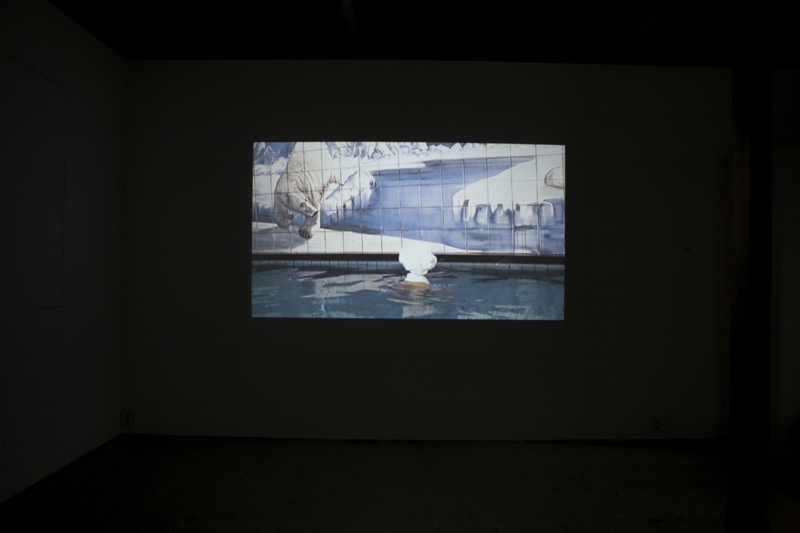
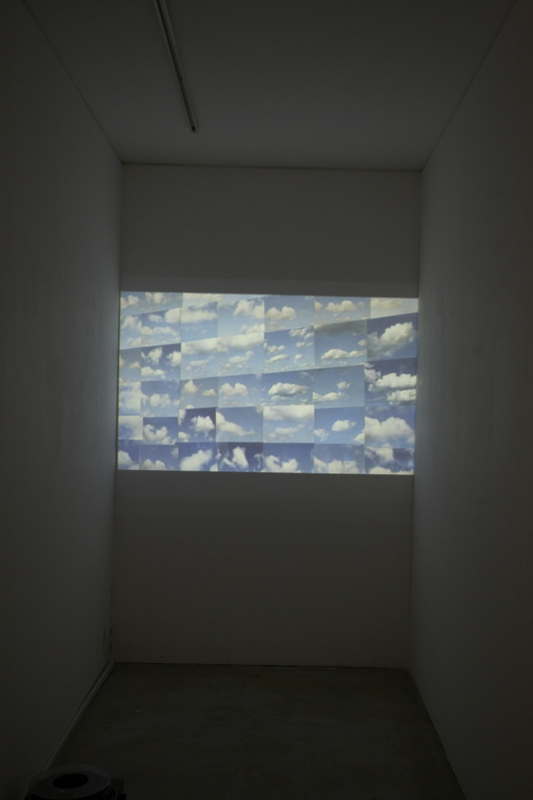
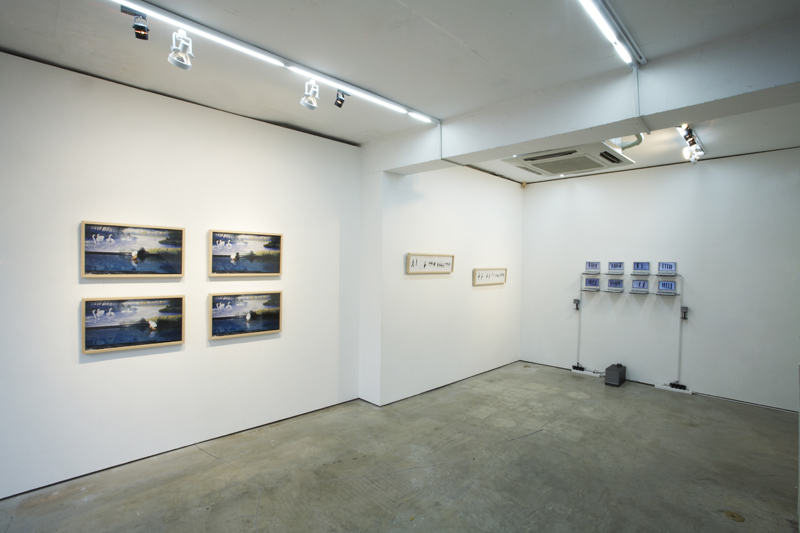
- 부대 프로그램
-
-

- 보이는 것과 보이지 않는 것
- 2006.5.19_6.11
-
-
-
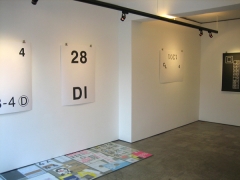
- (최)슬기와 (최성)민의 (넓은 의미에서) 타이포그래피
- 2006.4.21_5.13
-
-
-

- People Call Me Madame Owl
- 2006.3.24_4.15
-
-
-

- 2006 이주영 프로젝트 <잃어버린 언어를 찾아서>
- 2006.2.25_3.19
-
-
-

- 한글꼴이 걸어나오다
- 2005.11.15_12.4
-
-
-

- Tinker
- 2005.10.12_11.6
-
-
-

- 마음
- 2005.9.3_9.25
-
-
-

- Surreally Real! : 미술, 혹은 마술
- 2005.6.15_6.30
-
-
-

- 고가현 개인전 <사람-형태소>
- 2005.1.14_3.13
-
-
-

- 이면공작裏(異)面工作 시나리오
- 2005.1.14_
-
-
-

- Park +
- 2004.11.5_12.5
-
-
-

- 하늘 공연장 Open Theater
- 2004.9.17_10.20
-
-
-

- My Style Your Style
- 2004.8.27_9.12
-
-
-

- 한여름 밤의 꿈
- 2004.8.10_8.22
-
-
-

- 우울증에 걸린 집
- 2004.7.9_7.31
-
-
-

- 나는 니가 행복했으면 해
- 2004.6.11_6.27
-
-
-

- 목성
- 2004.4.28_5.23
-
-
-

- 엔트로듀싱
- 2004.3.26_4.18
-
-
-

- A Diary: Typographic Days
- 2004.2.20_3.21
-
-
-

- Window Exhibition
- 2003.11.25_12.14
-
